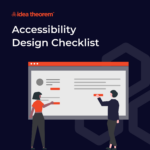When you work closely with startup founders or executives who are looking to take over the world with their next product.
They are so obsessed and passionate, they hope to solve everyone’s problem with that product. Their positive energy definitely rubs off on you, and you also get super excited…. But then there’s reality 🙂
As Mike Tyson said it best ..
”Everyone has a plan ’till they get punched in the mouth. – Mike Tyson”
”Everyone has a plan ’till they get punched in the mouth.”
That doesn’t mean that you shouldn’t dream big or not have a big vision or even be afraid to fail. The challenge with solving everyone’s problem with your product is more like trying to keep everyone happy which will get you
NOWHERE.

That brings us to a very important question: Who is your Target Audience?
If your answer is “Everyone” and you have just launched or in process of building your product, you might hit a roadblock soon called sales 😉 .
Every product starts off trying to solve a problem for someone, that someone is your target audience. You should be spending as much time as possible with your target customer, in order to the do user research. Some startups or companies might not believe much in user research, for them may be Persona for lean UX might be the best path forward.
When building your first iteration of your product, it is so important to stay focused on your target audience. The target audience would help you identify the features that would make your Minimum Lovable Product. At IdeaTheorem we don’t build MVP, we build M❤P because first impressions matter !!!
When things don’t go as planned…
We have worked with companies that were unable to connect with their customers after building their product. As a result, sales or conversions didn’t happen as expected now the impulse reaction for some stakeholders might be to:
- Add another feature
- Launch into another country or region
- Build it for another OS (If already built for iOS then build it for Android)
Sometimes when things are not going as planned, your next best step should be to take a STEP BACK which is to go back to User Research.
Although it may be challenging to convince the stakeholders and also may not look like progress on paper or even on your project schedule. This would help your product pivot to solve real customer pain points. That might land up being the most important aspect of your product, which would keep it alive and drive sales!
”User Research would help focus your product to solve real customer pain points. #UserResearch” quote=”User Research would help focus your product to solve real customer pain points”
Companies spend large sums of money on product development but by the time they realize that the product is failing, they have depleted all their resources and might not even have funding for the UX Phase. Large companies have come to realize the importance of user research, and are now investing heavily in it.
Smaller companies or startups still ignore the user research phase all together as they are so focused on building the product. Slowly the mindset is evolving, and User Research is being incorporated in Sprint 0.







